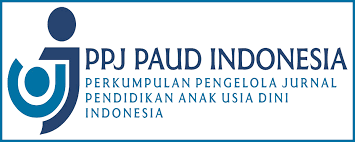DAMPAK PENGGUNAAN GADGET TERHADAP KESEHATAN MATA DAN POSTUR TUBUH PADA ANAK USIA DINI
DOI:
https://doi.org/10.33474/thufuli.v6i1.21195Keywords:
Anak Usia Dini, Gadget, Kesehatan Mata, Postur TubuhAbstract
Childhood is a golden age or a very important period because children will get many experiences that can encourage their development and growth, and there is a critical time span where this child's development will benefit a lot. The use of gadgets that continues to grow has an impact on many things including eye health problems and posture in children. This research uses a qualitative method with a case study approach obtained from data collection techniques using observation methods on children with initials (A) and interviews with parents of children with initials (A). In addition, this study uses data collection techniques, namely literature studies, by collecting various reading sources, such as previous research from journals, articles or reading sources from books regarding the impact of gadget use on eye health and posture in children. The child with the initials (A) has experienced eye health problems since May 2023 due to exposure to gadget radiation and frequent use of gadgets for long periods of time and close distances. However, he did not experience problems in his posture. Various efforts have also been made by the child's parents in order to prevent excessive gadget use.Childhood is a golden age or a very important period because children will get a lot of experiences that can encourage their development and growth.
References
Gunter, B. (2019). Chapter 5 Gender and Mobile Phone Use. Children and Mobile Phones: Adoption, Use, Impact, and Control, 49–58. https://doi.org/10.1108/978-1-78973-035-720191008
Iivari, N. (2020). Empowering children to make and shape our digital futures – from adults creating technologies to children transforming cultures. International Journal of Information and Learning Technology, 37(5), 279–293. https://doi.org/10.1108/IJILT-03-2020-0023
Khalid, T., Batool, S. H., Khalid, A., Saeed, H., & Zaidi, S. W. H. (2020). Pakistani students’ perceptions about their learning experience through video games: A qualitative case study. Library Hi Tech, 38(3), 493–503. https://doi.org/10.1108/LHT-03-2019-0068
Kucirkova, N. (2018). Personalised learning with digital technologies at home and school: Where is children’s agency? Mobile Technologies in Children’s Language and Literacy: Innovative Pedagogy in Preschool and Primary Education, 133–153. https://doi.org/10.1108/978-1-78714-879-620181009
Moon, E. C. (2018). Teaching students out of harm’s way : Mitigating digital knowledge gaps and digital risk created by 1:1 device programs in K-12 education in the USA. Journal of Information, Communication and Ethics in Society, 16(3), 290–302. https://doi.org/10.1108/JICES-02-2018-0012
Widyatri, I., Salman, A. G., & Kanigoro, B. (2018). Parental control application on Android platform. Library Hi Tech News, 35(1), 18–24. https://doi.org/10.1108/LHTN-08-2017-0057






